
No matter how many years it’s been since matriculation, with the passing of Labor Day images of school starting flood the database known as our brain. It’s in this spirit that we conclude our 2-part series about how PR and communications are taught in colleges and universities. It is our intention that examining trends in this area will help both PR pros and academics improve the quality of their work.
To foreshadow what’s ahead, we found plenty of agreement between what our PR and communications pros told us and what the quartet of academics we interviewed said.
Writing—specifically, writing for PR vehicles that is clear, concise, creative and persuasive—was among the skills both the pros and academics emphasized. Several of the academics said students lack familiarity with PR writing, which, they said, is different from writing term papers. Our academics said this is an area they stress extensively with students.
Both the pros and the academics also mentioned that aspiring PR pros need to have a reasonable grasp of business concepts. Analytics found its way into the responses of both groups, too. Developing critical thinking skills was another area where both the pros and the academics agreed. Last, softer skills, such as how to present in front of a group, were noted as an area that students are working on in the classroom and which pros felt was necessary.
What we Asked the Pros
To refresh your memory, in our previous edition, August 29, we asked in-house communicators and agency professionals to:
•Assess the readiness of young PR and communications professionals when they begin their careers.
•Tell us whether or not there is a significant difference in effectiveness between young pros who studied PR and communications in college or post-graduate programs and those who had not.
• Assume they had the ear of an academic. What would you tell him/her to emphasize to students?
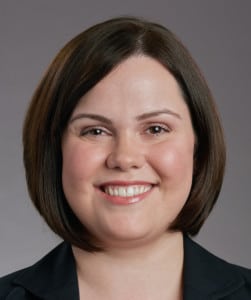
The PR pros’ answers were fairly consistent. All touted the digital prowess of incoming professionals. Charlene DeBar, manager, corporate communications, Toshiba America Medical Systems, was representative of many of our pros who said young hires “are incredibly adept at digital and social communication. It’s the world they’ve grown up in, and seasoned professionals can learn a lot from newcomers in this area.”
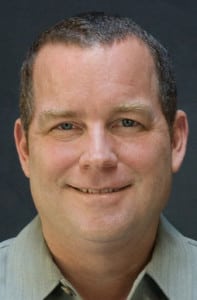
Written and oral communications were skills our pros found were wanting, however. In addition, hard and soft skills were mentioned. Eric Hollreiser, VP, corporate communications, Amaya Inc. and PokerStars, urged academics to “teach business fundamentals” to enhance young PR pros’ understanding of the impact communications has on the bottom line.” It will improve their counsel, he added.

Turning to soft skills, Linda Rutherford, CCO at Southwest Airlines, said, “I have seen several collegiate programs begin to offer courses in executive presence, confidence in presenting at all levels of an organization and influencing beyond positional authority.” With much work sent to cross-functional units, “even a junior member of the communications” team could be participating in projects with senior staff, she added. “How you show up” and other soft skills “are becoming more critical...as we become” chief integrators.
Last, our pros were split about whether or not study in college or grad school made a significant difference for young hires. Some said the students came in knowing the language of PR and the basics. Others agreed, but said the students’ edge vs. non-students was slight.
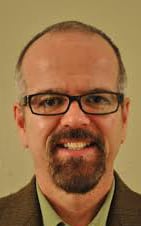
As Paul Englert, VP of marketing, C. Mondavi & Family, said, those who’ve studied PR “require less training and are more prepared to assume responsibility than those who haven’t…they are quicker to jump right into their work. They are more confident, empowered with formal PR training and are quick to produce effective, concise communications and assume client management responsibilities.” Still, he put a premium on “a well-rounded education that encourages creativity and independent thought…these professionals ultimately are the ones running agencies and becoming invaluable strategic partners” to brand clients.
What We Asked the Academics
But now, on to this week’s focus, the academics. To be more strategic, the academics we spoke with all are former or current PR pros. The questions we submitted to them were related to those we asked of the PR pros. For example, we asked the academics:
• How do you incorporate the latest PR and communications trends into your classes?
• What areas are students least proficient in when they enter your classroom?
• What 2-3 skills or pieces of knowledge do you hope students have when they leave your classroom?
• Without concern for budgets, what 2-3 things would you add to the curriculum to produce better PR and communications pros?
Incorporating Trends into the Classroom
With one of the major criticisms of professional education being that it can be static and behind the times, we felt it important to ask our academics how they infuse their classrooms with the hottest PR trends.
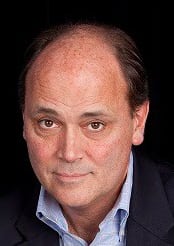
For Lawrence Parnell, associate professor and director of the Master’s in Strategic PR program at The George Washington University, trends are included in his program “by updating the curriculum on an annual basis – e.g. texts, discussion topics and assignments. This is based on student evaluations and our assessment of the current state of the practice of PR.”
In terms of digital skills, Parnell’s program has “cooperative arrangements with software companies to give our students access to media monitoring, influencer tracking and social media analytics during their time in the program.”
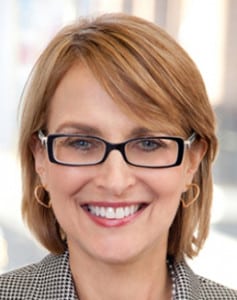
Deborah Brown, an adjunct professor at Stern College for Women, Yeshiva University, brings trends into the classroom from her position as partner, managing director, Peppercomm. “One trend is storytelling,” she says. “It’s important for students to learn how to tell a compelling story, whether it’s for a pitch or a piece of content for a website.” She adds, “Students need to learn how to present well and tell a story as opposed to reading slides.” Another trend she’s introduced recently in her classroom is the ability to “get across a key message succinctly by creating 6-second videos…audiences today are so distracted and it’s challenging to keep anyone’s attention.”
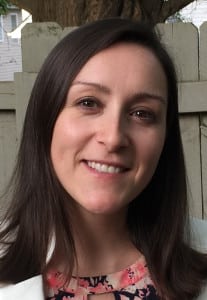
Like Brown, the emphasis for Kristen Heflin, the PR program director at Kennesaw State University’s School of Communication & Media, is on student assignments and lectures. “We require our students to develop websites, blogs and social media campaigns,” she says. “We also require many of our students to conduct keyword research, learn the principles of search engine optimization and become certified in Hootsuite and Cision.” To keep up with trends, Heflin and her colleagues, in addition to reading and conducting academic research, “attend professional development workshops, PRSA meetings and technology-focused webinars.”
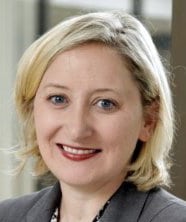
Jessica Nielsen, adjunct professor at Georgetown University’s Global Strategic Communications program, assigns her students readings in industry publications and on newsworthy sites. These resources “provide our students with ongoing crisis examples and information about campaigns, which we then discuss in-depth.”
Both Nielsen and Parnell emphasize giving students access to PR pros to keep the curriculum sharp. Says Nielsen, “We bring practitioners to our classes through hybrid learning formats that pair in-person intensive residencies with ongoing virtual classes. These platforms allow us to remove global boundaries and let students speak directly with CCOs and thought leaders who are managing major campaigns.”
Similarly, Parnell’s program, also based in D.C., “has a constantly changing list of guest lecturers representing the media, government, nonprofits and associations.” In addition students can hear guest lecturers from the D.C. offices of global PR firms and corporate communications professionals from area companies. There’s also a virtual aspect via Webex, he says.
Where Students are Lacking
Many of the skills and abilities that the PR pros noted in the August 29 edition—writing, presentation skills, for example—resurfaced when we asked the academics where their students were lacking. Writing was mentioned a lot.
For Brown of Stern, who teaches undergraduates, “It’s more about what students need to be taught” than what they lack when they arrive at college. “Writing for communications often is different from what they learned in high school, and it needs to be succinct, compelling, and newsworthy.”
In addition, Brown says presentation and oral skills “are key so [young pros] can do well in an interview or have a conversation with a client. This comes from learning various techniques and practice.”
Parnell of GW echoes Brown on the type of writing students need to master. Students, he says, need to gain “the ability to write persuasively as opposed to writing academic papers.”
Heflin of Kennesaw State, referring to incoming college students, says “many students struggle with the rules of grammar and clarity.” She says time devoted to writing basics is time missed “discussing strategic message development.”
Related to writing issues, “some students also struggle with critical thinking,” Heflin says. “Many are so focused on memorization or asking professors for the right answer that they lack confidence in their ability to come up with a solution.”
In addition, Parnell says students often lack an “understanding of the fundamental role of research in strategic communications planning and program evaluation.” Training in ethics and PR law also are areas of need, he says. Core courses with a practical emphasis in these areas are required in GW’s Master’s program, he says.
Nielsen of Georgetown, who, like Parnell, teaches graduate students and students who already are in the work world, says, “One area that we focus on carefully to accelerate our students’ progression into the CCO position is emotional intelligence within a global environment.” Nielsen urges her students to think about communications “in the broadest sense and not just about the U.S.” In addition, the Georgetown program covers investor relations and financial communications, two areas that are not always offered in academic settings.
Parnell also feels students upon entering school “should have a better understanding of the career paths in PR—agency, corporate, nonprofit and government/politics—and what skills they need to develop to succeed in each.”
Departing Skills
Speaking of skills, we asked what skills and knowledge the academics hope their students depart with.
In addition to the skills he noted above, Parnell wants his students to depart his program with “an enhanced ability to think critically and apply communications theory and strategy to real-life communications challenges.”
They’re asked to prove this ability at the program’s end, he says, when students must complete either an in-depth case study or a comprehensive strategic communications plan. Students who choose the latter option add more practicality to the equation by choosing a communications plan related to their employer. “This often results in a new assignment and/or a promotion,” he says.
Brown’s response to this question seems to stem from her full-time position at Peppercomm: The skills she hopes students take from the classroom include “knowing how to work in teams, understanding how to conduct research to uncover a white space for a client, and how to develop strategic and creative ideas to solve a client’s challenge.”
Heflin pushes solid writing skills. “It’s crucial,” she says. “It’s also important that students leave our program as critical thinkers with the ability to ask good questions and the research skills to find the answers.” How to plan and manage a campaign also are critical skills. “That way they know how to implement effective, research-driven, ethical campaigns instead of just focusing on isolated tactics.”
Nielsen was succinct on this question: “a heightened self-awareness, a global view. and a deep understanding of the role of a communications leader within business strategy.”
Academics’ Wish Lists
Last, we asked what our academics would add to the curriculum if budgets were not an issue. Nielsen says she’d emphasize “research and analytics to develop insights.” Heflin also would push analytics, social media and SEO and video production.
Nielsen also would add courses that emphasize leadership and self-awareness and classes that will help future CCOs collaborate “across an entire organization.”
Parnell says his graduate program would be helped if undergrads “did more practical skill development, such as persuasive writing, basic communications research, public opinion work and ethics.”
Brown would add classes on storytelling “so they learn how to effectively communicate orally as well as…craft compelling, succinct content. This is very different from speech classes.”
CONTACT: [email protected] [email protected] [email protected] @erichollreiser [email protected] [email protected] [email protected] [email protected]
This content appeared originally in PR News Pro, September, 12, 2016. For subscription information, please visit: https://www.prnewsonline.com/about/info
